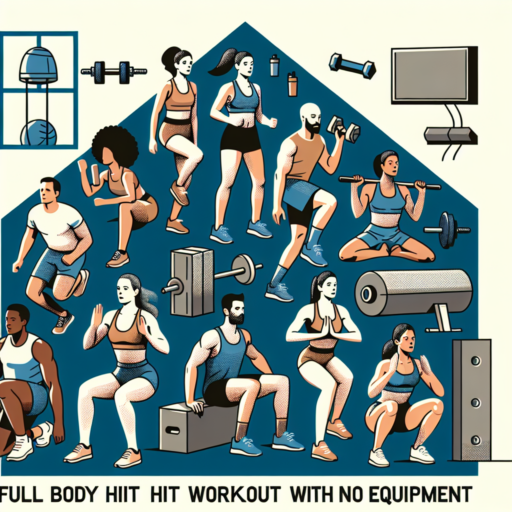How to train for running indoors?
Training for running indoors comes with its unique set of strategies and benefits. Unlike outdoor running, which might be affected by weather and terrain, indoor running provides a controlled environment that can be perfect for focused training sessions. Understanding the right approach to maximizing your indoor running routine is crucial for effective results.
Choosing the Right Equipment
First and foremost, selecting a high-quality treadmill is vital. Look for a model that offers a variety of training modes, including incline and speed adjustments, to mimic outdoor running conditions as closely as possible. Additionally, consider the cushioning of the treadmill to minimize impact on your joints.
Structured Training Programs
Integrating structured training programs into your routine can significantly enhance your indoor running experience. Utilize built-in treadmill programs or apps designed for runners. Focus on interval training, which is particularly effective indoors, alternating high-intensity sprints with recovery periods. This method not only maximizes cardiovascular benefits but also keeps the training session engaging.
Remember, the key to successful indoor running is to stay motivated and adaptable. Experiment with different training approaches to find what works best for you, and always keep your ultimate running goals in sight.
Is running in your house effective?
When considering the effectiveness of running in your house, several factors come into play. One might question if the confined space and repetitive route can offer the same benefits as running outdoors or on a treadmill. However, the adaptability of the human body and the inventive ways to make indoor running challenging and effective should not be underestimated.
Maximizing Space for Indoor Running
Even with limited space, running in place or utilizing small circuits within your home can still get your heart rate up and provide a decent cardiovascular workout. Incorporating high-knee runs, butt kicks, and even running backward can add variety and intensity. Moreover, strategic use of staircases not only elevates the heart rate but also builds strength in the lower body.
Enhancing Endurance and Stamina
Running in your house might seem monotonous but can be surprisingly effective for endurance and stamina building. Unlike the varying terrains and distractions encountered outdoors, the stable and predictable environment of home running allows for focused, uninterrupted sessions. With the addition of an upbeat playlist or engaging audiobook, indoor running sessions can become longer and more enjoyable, contributing significantly to stamina enhancement.
It’s crucial to recognize the creative adaptations that make running in your house not just a viable option, but also an effective one. By implementing varied running drills, leveraging indoor structures, and focusing on consistency, runners can achieve substantial fitness gains without stepping outside.
No se han encontrado productos.
What indoor exercise is equivalent to running?
Finding an indoor exercise that matches the intensity and benefits of running can seem like a tall order. However, several activities come close, providing cardiovascular benefits, endurance building, and calorie burning that rivals a good run. While running has its unique advantages, these indoor exercises offer valuable and sometimes preferable alternatives.
High-Intensity Interval Training (HIIT)
High-Intensity Interval Training (HIIT) tops the list for its efficiency and effectiveness. HIIT involves short bursts of intense exercise followed by brief rest periods. This method can be applied to a variety of exercises, including cycling, rowing, and bodyweight workouts. The beauty of HIIT lies in its adaptability and its capability to deliver significant aerobic and anaerobic benefits in a fraction of the time one might spend running.
Indoor Cycling
Another excellent alternative is indoor cycling. Whether it’s on a stationary bike at the gym or a cycling class, indoor cycling can match running’s cardio workload. It’s also lower impact, reducing the risk of injury associated with the repetitive stress of running. With the ability to adjust resistance and speed, cyclists can easily tailor their workouts to mimic the intensity of a long, steady run or an exhilarating hill sprint.
Rowing
Rowing is a formidable contender as well. Engaging in rowing, either on a machine or in water-rowing classes, provides a comprehensive workout that includes aerobic conditioning similar to running. It combines the benefits of a cardiovascular workout with strength training, targeting both the upper and lower body. This makes it a holistic activity that challenges the entire body in a way that running often can’t match.
Can I run for 30 minutes a day?
Running for 30 minutes each day is a goal that many fitness experts recommend for individuals looking to improve their cardiovascular health, lose weight, or maintain a healthy lifestyle. This simple yet effective form of exercise has been linked to numerous health benefits, ranging from enhanced mood to reduced risk of chronic diseases.
Building a Habit is crucial when aiming to run for 30 minutes a day. Consistency is key, as it helps in adapting both mentally and physically to the new routine, eventually making it a part of your daily life. It’s not only about the physical changes but also about setting a positive mindset towards exercise and well-being.
Incorporating Variety into your 30-minute run can significantly impact your motivation and the effectiveness of your workouts. Alternating between different running paths, changing your pace, or even adding short intervals of high-intensity running can make each session more enjoyable and challenging. This approach helps in engaging different muscle groups and improving overall stamina and endurance.




